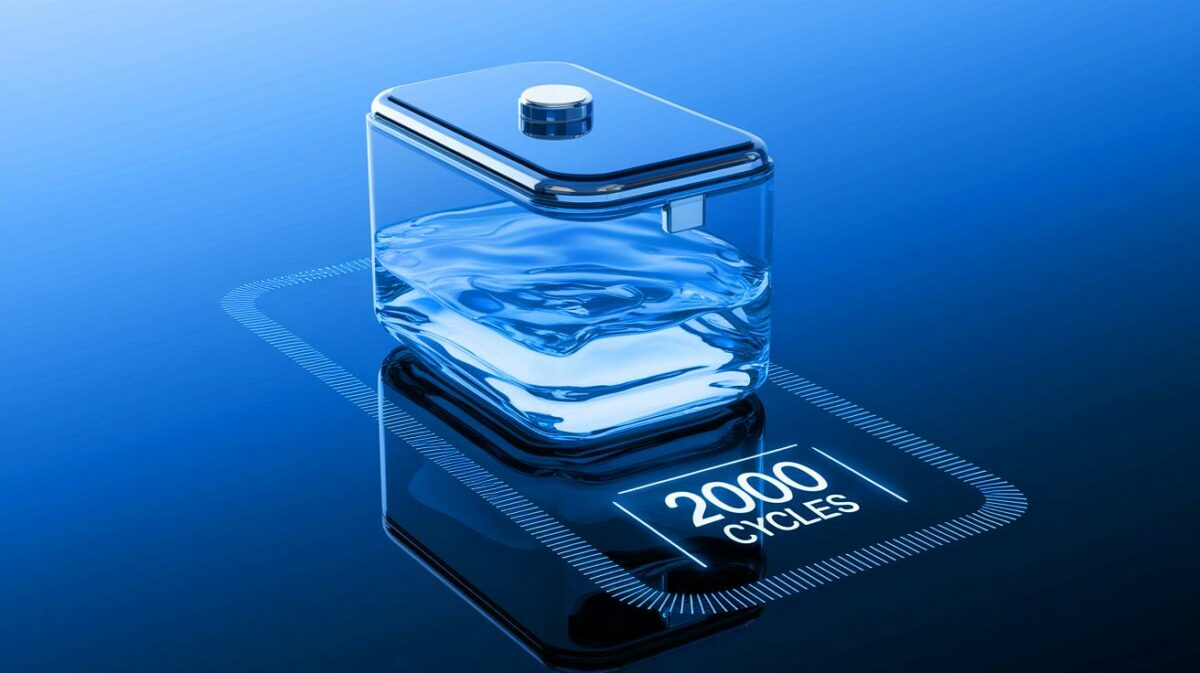| IN A NUTSHELL |
|
In a groundbreaking development, researchers have shattered long-standing barriers in the realm of aqueous battery electrolytes. This innovation, spearheaded by a team at the University of Maryland, represents a leap forward in energy storage technology. By surpassing previous voltage limitations, this novel system promises to deliver higher energy densities and extended battery life. The implications of this breakthrough are vast, potentially transforming industries from electric aviation to large-scale grid storage. As we delve deeper into the details of this discovery, we explore the potential impacts and future applications of these water-based power cells.
Breaking the Voltage Barrier in Aqueous Electrolytes
The new electrolyte system has achieved what was once deemed impossible: extending the reduction potential limit from 1.3 volts to an astonishing 0.0 volts. This advancement paves the way for the development of high-energy-density aqueous batteries. The research, led by Professor Wang Chunsheng, showcases a model battery that maintained stability even after 2,000 cycles. Such durability is unprecedented in the realm of aqueous batteries, marking a significant milestone in energy storage technology.
Central to this innovation is the use of membrane-free aqueous/organic bi-layer electrolytes. By incorporating super-lithophilic ionophores, researchers have reduced interface resistance and mixing between phases. This development not only enhances performance but also sets the stage for future advancements in battery technology. The implications of this discovery are profound, promising to revolutionize how energy is stored and utilized across various sectors.
Emphasizing Safety and Eco-Friendliness
Water-based electrolytes inherently offer a safer and more eco-friendly alternative to traditional battery materials. This quality makes them a promising choice for next-generation energy storage solutions. However, their narrow electrochemical stability window has historically limited their application. The recent breakthrough overcomes this limitation, unlocking new potential for aqueous batteries.
By widening the stability window, the new electrolyte system not only boosts energy density but also expands the applicability of aqueous batteries. This advancement aligns with global efforts to develop sustainable and environmentally friendly energy solutions. The safety benefits of water-based electrolytes cannot be overstated, offering a less hazardous alternative for industries seeking to reduce their environmental footprint.
Expanding Applications Across Industries
The versatility of this technology is one of its most compelling features. From electric aviation to low-carbon grid storage, the potential applications are vast and varied. The ability to extract lithium from seawater further underscores the transformative potential of this innovation. By addressing the challenges of biphasic mixing and high impedance, the research opens new avenues for utilizing aqueous/non-aqueous electrolytes.
Published in the prestigious journal Nature Nanotechnology, the study highlights the role of lithium ionophores like 12-crown-4 and tetraglyme. These compounds form nanoclusters that effectively manage the interface challenges in biphasic systems. Such advancements not only enhance the performance of aqueous batteries but also broaden their application scope, offering new possibilities for energy storage solutions worldwide.
Overcoming Interface Challenges in Biphasic Electrolytes
The innovation addresses a critical bottleneck in the development of aqueous batteries: the voltage mismatch with lithium metal or graphite anodes. Previous water-in-salt aqueous electrolytes offered limited stability, hindering their compatibility with high-energy components. By extending the reduction potential limit, the new system resolves this issue, paving the way for higher energy densities.
Researchers emphasize that this breakthrough not only advances the field of aqueous electrolyte development but also lays a technological foundation for future energy storage systems. The study’s findings are set to redefine the boundaries of energy storage, propelling the industry toward safer and more efficient solutions. As we consider the implications of this research, it becomes clear that the future of energy storage is both exciting and full of potential.
As the world grapples with the challenges of sustainable energy, innovations like these offer hope and direction. This breakthrough in aqueous battery technology is a testament to the power of scientific research and ingenuity. What other transformative advancements might emerge as we continue to explore the potential of water-based energy solutions?
Did you like it? 4.5/5 (24)









Is this the end of lithium-ion batteries? 😲
Wow, a battery that can last 2000 cycles? Count me in! 🔋
Interesting, but how practical is this technology for everyday use?
Its click bait nonsense
This sounds promising, but what are the cost implications? 💸
Thanks for sharing this exciting news! 🌟
Will this new tech impact electric cars anytime soon?
Finally, a safer alternative to those pesky lithium batteries.
Excited to see how this changes the renewable energy landscape!
Trump’s involvement in this seems a bit far-fetched. 🤔
Great article! Keep us updated as this technology develops further.
How does this compare to other emerging battery technologies?
I’m skeptical. Sounds too good to be true!
Can this battery tech be used in solar energy storage systems?
What are the environmental benefits of this new tech?
Finally, a battery that doesn’t catch fire! 🔥🚫
Is this tech scalable for industrial applications?
Just another overhyped innovation or a real game-changer?
Why is Trump in the headline? The only thing he could possibly have to do with something like this is the threaten to terminate research funding.
How soon until we see these batteries in the market?
🤯 Mind-blowing! This could change everything.
Does this mean cheaper energy solutions for consumers?
Thank you for the insightful article! 🌍
I’m curious about the long-term sustainability of this tech.
When can we expect to see these in electric airplanes?
Trump declaring the battery era over is a bit dramatic, isn’t it? 😂
Hope this isn’t another tech that fades away…
Fantastic news for the environment! 🌿
Even the comments are A1 genrrated
Can this tech be adapted for small devices like smartphones?